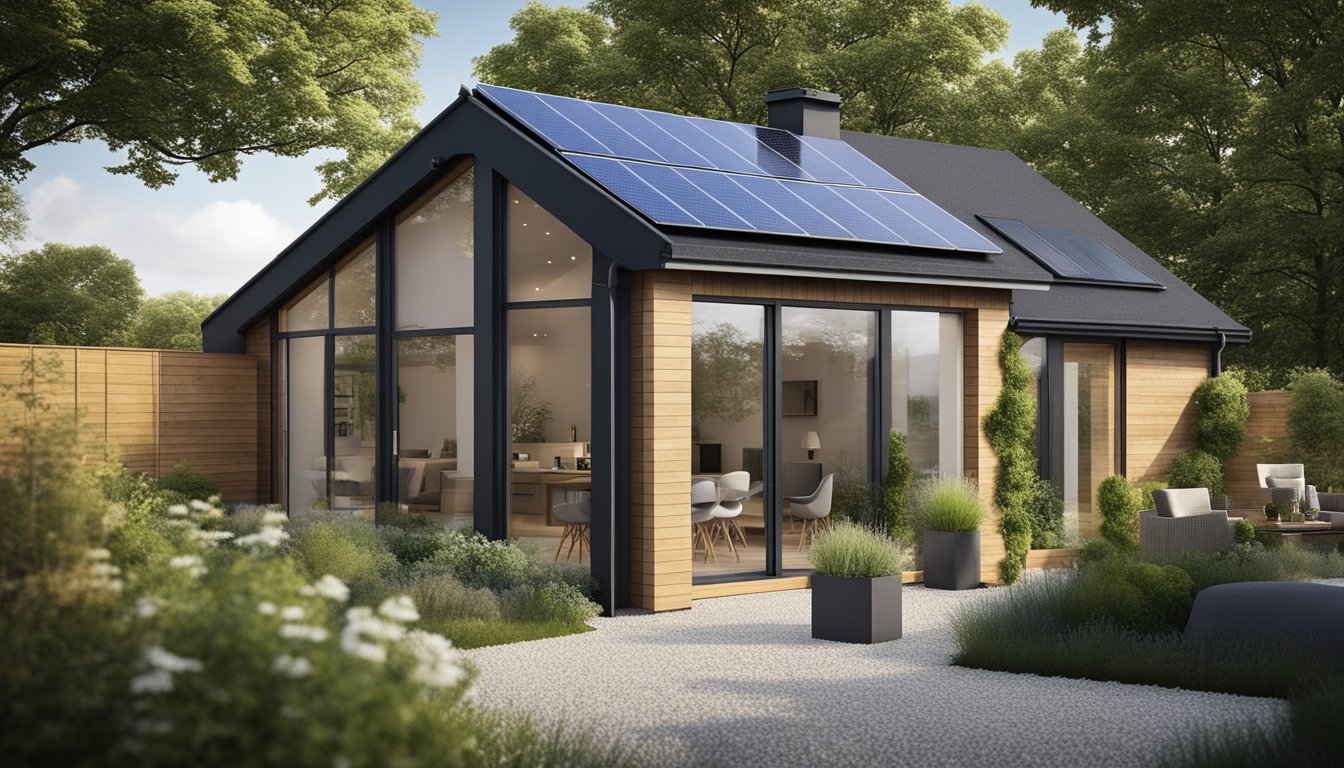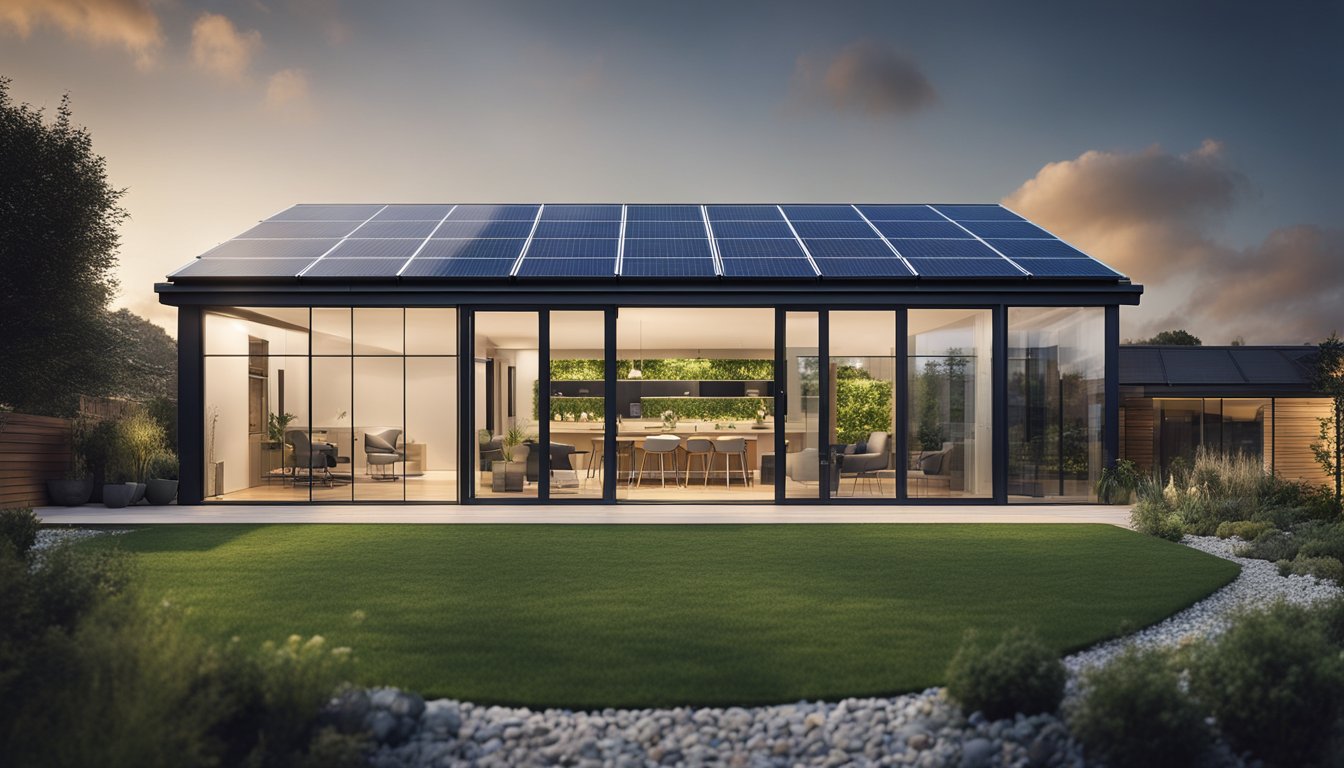Late updated: 09 Jul 2024 08:07
Written by: Eleanor Hartman
Energy-Efficient Home Design Trends In The UK: Innovations and Sustainable Solutions
In recent years, energy-efficient home design has become increasingly important in the UK. This trend isn't just about reducing utility bills; it's also about minimising our environmental footprint. Many homeowners are now prioritising renovations that boost energy efficiency, and the data supports this shift. For instance, a significant number of UK homes now boast energy efficiency ratings of band C or higher, reflecting a marked improvement from past years.

Innovative materials and building techniques are at the forefront of this transformation. Architects and builders are utilising advanced insulation, high-performance windows, and smart home technologies. These advancements not only enhance the comfort and sustainability of homes but also contribute to compliance with stricter building regulations aimed at achieving net-zero carbon emissions.
As more UK homeowners embrace these energy-efficient upgrades, we are also seeing a shift in how homes are valued and sold. Energy Performance Certificates (EPCs) play a critical role here, providing potential buyers with clear information on a property's energy efficiency. Understanding these certificates and making the necessary improvements can significantly enhance a home's market appeal and value.
Key Takeaways
- Energy-efficient home design reduces bills and environmental impact.
- Innovative materials and techniques are central to this trend.
- Energy Performance Certificates are crucial for home valuation.
Innovative Materials and Building Techniques

Emerging advancements in materials and construction methods are shaping the future of energy-efficient home design in the UK. Integrating cutting-edge insulation, glazing, and ventilation technologies is crucial for optimising energy performance.
The Role of Insulation in Energy Efficiency
High levels of insulation are fundamental to achieving energy efficiency in homes. Traditional insulation materials, such as fibreglass, are now being complemented by more innovative options like wood fibre and sheep’s wool.
These natural materials not only provide excellent thermal performance but also enhance sustainability.
The use of Cross-Laminated Timber (CLT) panels, known for their superior insulated properties, is becoming more prevalent. Homes built with CLT benefit from reduced energy consumption due to its effective thermal regulation capabilities. Additionally, vacuum insulated panels (VIPs) offer superior insulation with minimal thickness, saving space while ensuring high energy performance.
Glazing Solutions for Improved Energy Performance
Windows play a significant role in a home's energy dynamics. Double glazing is standard, but the shift towards triple glazing is notable for its enhanced insulating properties.
Triple-glazed windows have three layers of glass separated by gas-filled spaces, significantly reducing heat transfer.
Modern low-emissivity (Low-E) coatings on glazing further boost thermal performance by reflecting heat back into the room.
Smart glazing technologies, which adjust their transparency based on external conditions, are also gaining traction. These solutions enhance both energy efficiency and comfort by optimally managing natural light and heat. Furthermore, structural insulated panels (SIPs) are used for creating highly energy-efficient windows and building envelopes.
Modern Ventilation Systems and Airtightness
Proper ventilation is essential for maintaining indoor air quality while ensuring thermal efficiency. Mechanical Ventilation with Heat Recovery (MVHR) systems are a game-changer in this context.
They recover heat from outgoing stale air and use it to warm incoming fresh air, conserving energy.
Implementing MVHR systems increases energy savings by minimising heat loss inherent in traditional ventilation methods.
Airtight construction techniques are vital as well. Ensuring that the building envelope is airtight prevents unwanted air leakage, which can drastically reduce heating and cooling demands. Utilising advanced sealing materials and installation practices ensures high levels of airtightness without compromising indoor air quality.
Energy Performance and Certification
Energy performance and certification play crucial roles in advancing energy-efficient home design in the UK. Energy Performance Certificates (EPCs) and the regulatory standards shaping their future are central to this development.
Understanding Energy Performance Certificates (EPCs)
Energy Performance Certificates, or EPCs, provide a detailed report on a building's energy efficiency. These certificates are crucial for potential homeowners and tenants as they offer insight into likely energy bills and carbon dioxide emissions.
An EPC score ranges from A to G, with A being the most efficient. Properties rated in band A have the lowest fuel costs and emissions. Conversely, those in band G are the least efficient. Accredited energy assessors evaluate properties using government-approved software, considering aspects like insulation, heating systems, and window efficiency.
We can see a growing trend in new builds achieving higher EPC ratings, reflecting improved construction techniques and materials. For example, the number of properties attaining an EPC band A rating has significantly increased, highlighting a shift towards more energy-efficient homes.
Regulatory Standards and the Future Homes Standard
The Future Homes Standard represents the UK's commitment to reducing carbon emissions and enhancing energy efficiency in buildings. This standard mandates that new homes must achieve at least a 75% reduction in carbon dioxide emissions compared to current levels by 2025.
To meet these ambitious targets, builders and developers must adhere to stringent guidelines on insulation, heating, and window performance. The median energy issuance score for new homes is expected to improve, pushing more properties into higher EPC bands, particularly band C and above.
Furthermore, the regulatory landscape is evolving to encourage more energy-efficient existing properties. Renovations and retrofits will increasingly need to meet higher EPC ratings to comply with future regulations, ensuring older homes can also provide lower energy bills and carbon dioxide emissions.
Frequently Asked Questions

Energy-efficient home design in the UK encompasses a diverse range of trends, techniques, and architectural styles, all aimed at reducing energy consumption and promoting sustainability. Homeowners have multiple options to enhance their property's energy performance while eco-friendly homes are becoming increasingly common.
What are the leading trends in energy-efficient home design in the UK?
Prominent trends include the use of sustainable materials, advanced insulation techniques, and the integration of renewable energy sources such as solar panels. Smart home technology is also becoming more prevalent, allowing for better energy management and reduced wastage.
How can homeowners improve the energy efficiency of their properties?
Upgrading insulation, installing double or triple-glazed windows, and adding solar panels are effective measures. Switching to energy-efficient appliances, updating heating systems to more efficient options like heat pumps, and ensuring proper ventilation can also significantly reduce energy consumption.
What are some prime examples of eco-friendly homes in the UK?
Examples include the BedZED eco-village in London, known for its zero-emissions energy policy. The Copper Lane co-housing community also stands out for its use of sustainable design principles and energy-saving features. Many new builds in cities like Bristol and Brighton also focus on eco-friendliness.
Which architectural styles are most associated with energy efficiency?
Modern and contemporary architectural styles often embrace energy efficiency through design features like large windows for natural light and open floor plans that allow for better air circulation. Passive house design, which focuses on extremely low energy consumption, is also gaining traction.
What innovative solutions are available for creating eco homes in the UK?
Innovative solutions include green roofs, which provide insulation and reduce rainwater runoff. Ground source heat pumps, combined heat and power systems, and energy storage solutions like batteries for solar energy are also becoming popular. Smart home systems that automate energy savings play a significant role as well.
How prevalent are energy-efficient homes in the UK housing market?
Energy-efficient homes are increasingly common, with around 40% of homes in England now rated EPC B or C or better. New builds are leading the way, with 84% achieving top energy efficiency bands A or B. Public awareness and demand for such properties continue to grow, driven by environmental concerns and cost savings.